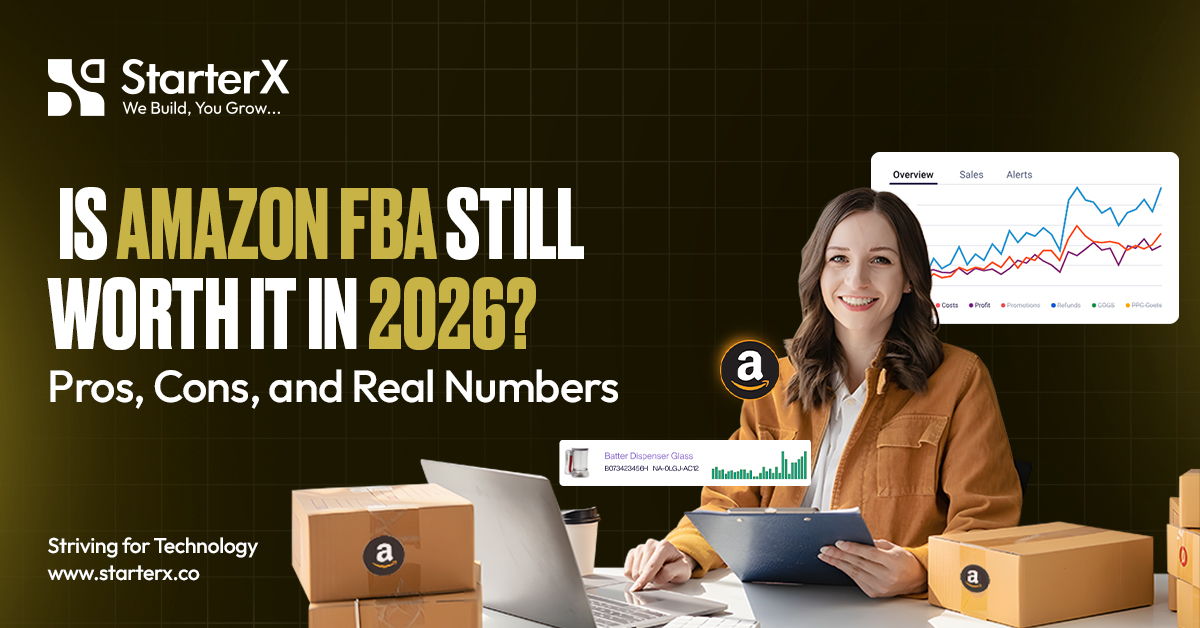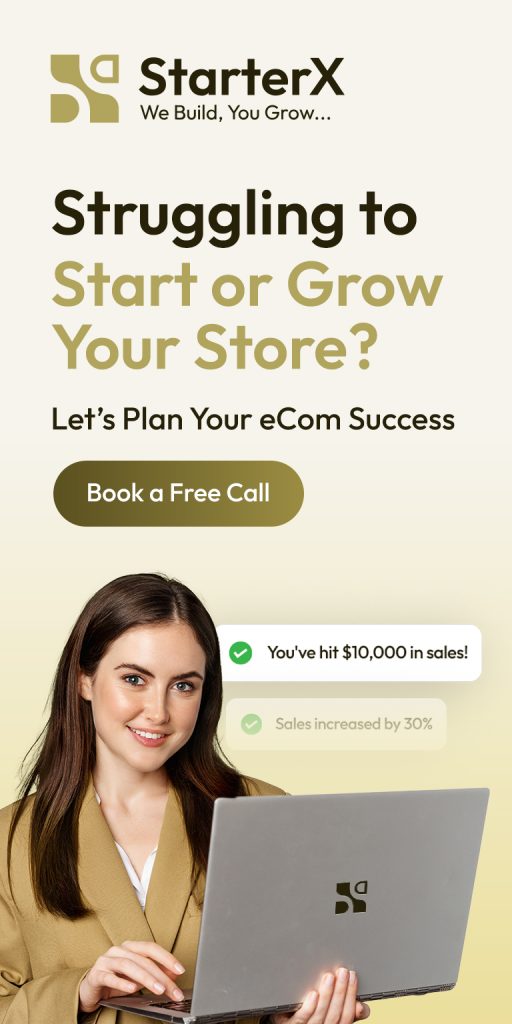Yes, Amazon FBA is still worth it in 2026 for sellers who choose the right products, manage their costs, and stay updated with the platform. It is not a get-rich-quick model, but it remains a reliable way to build a real online business if you approach it with strategy and patience.
Many people wonder if it’s too late to start or if the market is too crowded. The truth is, competition has increased, and advertising costs are higher than a few years ago. Still, more than 63% of sellers report they are profitable in 2026, according to Jungle Scout’s latest data. That means the opportunity is still there, but only for those who prepare and take action wisely.
If you’re feeling stuck, you’re not alone. It’s easy to feel overwhelmed by fees, product research, and logistics. Some sellers lose money because they jump in with the wrong product or spend too much on ads. Others struggle because they don’t understand the cost structure or what drives demand on Amazon today. Working with an experienced Amazon seller agency can often help reduce those risks by guiding you through the setup, launch, and scaling process.
This article gives you the full picture. You’ll learn:
- What FBA sellers are really earning in 2026
- How much does it cost to get started
- Which product types work best
- What mistakes to avoid
You’ll get actual numbers, real examples, and honest pros and cons. Everything is explained in plain language so you can decide if Amazon FBA is the right path for you.
We are a full-service Amazon agency. If you want to help regarding to start, mange or scale
Table of Contents
ToggleIs Amazon FBA Still Profitable in 2026?
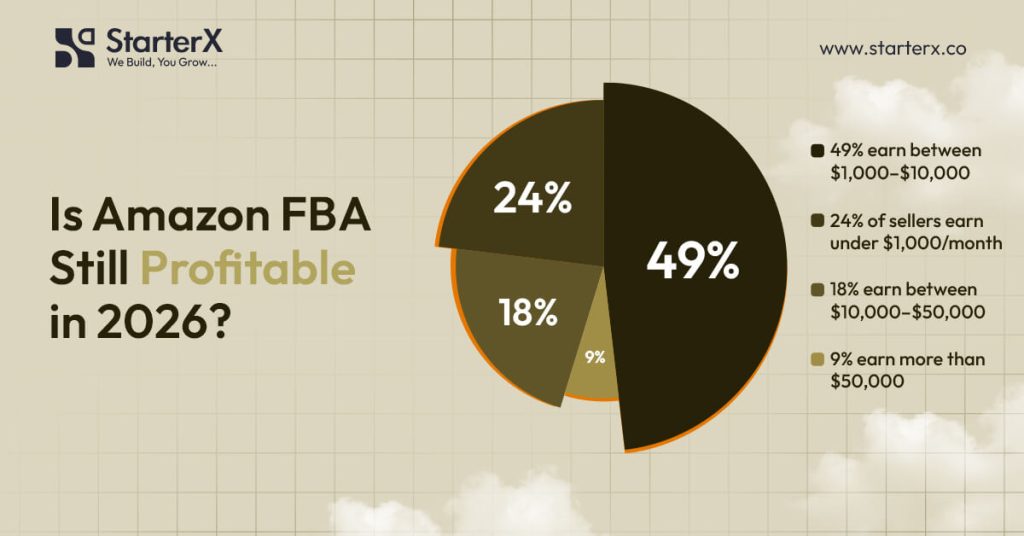
Yes, Amazon FBA is still profitable in 2026 for sellers who manage costs, select high-demand products, and build efficient supply chains. While competition is higher, profit potential remains strong for sellers who understand how the platform works.
According to Jungle Scout’s 2026 Seller Report, 63% of all Amazon FBA sellers are profitable, and 27% earn over $5,000 in monthly profit. Profit margins depend on the business model, product category, and ad spend control.
Average Profit Margins by Business Model in 2026:
| Business Model | Average Profit Margin |
| Private Label | 22% – 32% |
| Wholesale | 15% – 25% |
| Online Arbitrage | 10% – 20% |
| Retail Arbitrage | 5% – 15% |
| Dropshipping via FBA | Less than 10% |
Private label sellers have the highest margins because they control pricing, branding, and inventory. However, they also face higher startup costs. Retail arbitrage and dropshipping have the lowest margins, often squeezed by fees, limited stock, and pricing restrictions.
To stay profitable, sellers must focus on:
- High-converting product listings (optimized for Amazon SEO)
- Tight control of PPC spending
- Reducing storage and return-related costs
- Sourcing products with high perceived value and low competition
Ad costs have increased. The average cost per click (CPC) in 2026 is now $1.35, up from $0.97 in 2024. Sellers who don’t track ACoS (Advertising Cost of Sales) closely may lose money, even with good products.
Profitability also varies by category. For example:
- Home & Kitchen, Baby Products, and Pet Supplies average 25% to 35% profit margins.
- Electronics and Supplements are high-volume but low-margin due to returns and ad costs.
Key insight: FBA is still profitable, but you must track every cost, optimize listings, and choose the right product category. Sellers who treat Amazon as a real business and invest in smart operations are the ones earning consistent profit in 2026.
What Are the Main Advantages of Amazon FBA in 2026?
The main advantage of Amazon FBA in 2026 is automation. Sellers don’t need to handle packing, shipping, or customer service. Amazon takes care of the entire fulfillment process through its vast logistics network, giving sellers the ability to scale faster with less manual work.
FBA gives your products the Prime badge, which increases visibility and conversion rates. In 2026, over 200 million Amazon Prime members expect fast, free shipping. FBA makes your products eligible for 1 to 2-day delivery, which directly improves sales performance.
Here are the key benefits of using Fulfillment by Amazon in 2026:
- Fast and Reliable Shipping
Amazon handles picking, packing, and shipping from its globally distributed warehouses, reducing delivery times and shipping errors. - Higher Buy Box Win Rate
FBA listings are more likely to win the Buy Box, which drives the majority of Amazon sales. Fulfillment method, price, and seller performance all impact Buy Box eligibility. - Access to Amazon Prime Customers
Products fulfilled by Amazon are Prime-eligible, which boosts trust and click-through rates (CTR). Most buyers filter for Prime items by default. - Simplified Returns and Customer Support
Amazon manages returns processing, refunds, and 24/7 customer service, which reduces the operational burden on sellers. - Multi-Channel Fulfillment (MCF)
FBA can also fulfill orders from Shopify, eBay, or your own website, using the same Amazon logistics system. - Storage at Scale
Sellers can store inventory in Amazon’s fulfillment centers, avoiding the need to rent their own warehouse space. - Global Market Expansion
FBA supports cross-border selling with easy access to Amazon marketplaces in Canada, Europe, and the Middle East, using the same infrastructure.
Amazon FBA gives sellers a major edge in logistics, Prime access, and automation. These advantages make it easier to compete in 2026, especially in high-converting categories like Home & Kitchen, Office Products, and Baby Supplies.
What Are the Real Costs of Amazon FBA in 2026?
The real costs of Amazon FBA in 2026 include fulfillment fees, referral fees, storage fees, and advertising spend. These costs vary depending on your product’s size, weight, category, and how long it stays in Amazon’s fulfillment centers.
Sellers must understand these fees to calculate true profit margins. Ignoring even one cost, like rising ad spend, can quickly turn a winning product into a loss.
Key FBA Cost Components in 2026:
| Cost Type | Description | Typical Amount (Standard Item) |
| Fulfillment Fee | Covers picking, packing, and shipping by Amazon | $4.50 – $6.00 per unit |
| Referral Fee | Amazon’s commission on each sale (usually 15% of product price) | $3.00 – $6.00 per unit |
| Storage Fee | Monthly inventory storage in Amazon fulfillment centers | $0.75 – $1.50 per cubic foot |
| Long-Term Storage | Charged for inventory stored over 271 days | $6.90 per cubic foot |
| Returns Processing | Fee for processing customer returns on specific categories | $2.50 – $5.00 (varies) |
| Advertising (PPC) | Sponsored Products or Sponsored Brands campaigns | $1.35 average CPC in 2026 |
| Product Cost (COGS) | Manufacturing and shipping to Amazon | Varies widely by product |
Example Cost Breakdown (Standard Size Product, $30 Retail Price):
| Cost Item | Cost (USD) |
| Product Cost (COGS) | $8.00 |
| Fulfillment Fee | $5.00 |
| Referral Fee (15%) | $4.50 |
| PPC Cost (avg) | $3.00 |
| Storage + Other Fees | $0.75 |
| Net Profit per Unit | $8.75 |
| Profit Margin | 29.1% |
Important Attributes Affecting FBA Costs:
- Product size tier: Standard vs. Oversize
- Product category: Fees vary across niches (e.g. electronics vs. home goods)
- Storage duration: Long-term storage fees penalize slow-moving inventory
- Return rate: Categories like apparel or electronics often have higher return-related costs
- Ad competitiveness: Categories with high PPC competition require higher bids
In 2026, advertising is often the biggest variable cost. The average cost per click (CPC) is now $1.35, and ACoS (Advertising Cost of Sale) has climbed across most categories. Sellers who don’t monitor ad spend carefully often lose profit despite high sales.
Understanding your full cost structure is non-negotiable. Amazon FBA sellers in 2026 must factor in fulfillment, referral, storage, and advertising expenses to protect margins and scale profitably.
What Are the Disadvantages of FBA in 2026?
The biggest disadvantages of Amazon FBA in 2026 are high fees, limited seller control, and increased competition. While FBA offers convenience and scale, it also comes with trade-offs that affect both profitability and flexibility.
Many sellers underestimate how quickly costs can add up or how much control they give up by relying on Amazon’s system. Below are the main drawbacks that sellers face today.
1. High Fulfillment and Storage Fees
FBA fees continue to rise. In 2026, fulfillment fees for standard-size products range from $4.50 to $6.00, and long-term storage now costs $6.90 per cubic foot for inventory stored over 271 days. Sellers with slow-moving stock or bulky items are hit hardest.
2. Increasing Advertising Costs
PPC costs have reached record highs. The average cost-per-click (CPC) is now $1.35, up from $0.97 in 2024. In saturated categories, ACoS often exceeds 40%, cutting deep into profits. Sellers must track ad performance daily to stay profitable.
3. Limited Brand Control
With FBA, Amazon owns the customer relationship. Sellers can’t access customer emails, control the unboxing experience, or fully build long-term brand loyalty. Even with Brand Registry, communication options are limited.
4. Risk of Policy Enforcement
Amazon enforces strict policies on sellers. Your account can be suspended for issues like delayed inventory, listing violations, or negative customer feedback. FBA sellers are also affected by restock limits and inventory storage restrictions.
5. Listing Hijackers and Copycats
Without strong brand protection, listings can be hijacked by unauthorized resellers or copied by competitors. This is common in popular categories like supplements, home goods, and personal care.
6. No Guaranteed Profit
Selling through FBA doesn’t guarantee success. Many sellers miscalculate fees, over-order inventory, or choose the wrong niche. Without data-backed planning, even good products can fail.
Amazon FBA in 2026 is not risk-free. Rising costs, limited seller control, and Amazon’s strict ecosystem require careful planning. Success depends on smart financial management, strong branding, and constant optimization.
What Type of Seller Benefits Most from Amazon FBA?
The sellers who benefit most from Amazon FBA in 2026 are those running scalable, product-focused businesses with healthy margins and predictable demand. FBA works best when volume, automation, and fast fulfillment create an advantage.
Not every seller is a good fit. Those who treat Amazon like a long-term business and invest in branding, logistics, and performance optimization see the highest returns.
Sellers Who Benefit the Most from FBA:
- Private Label Sellers
These sellers build their own branded products and have full control over pricing, positioning, and inventory. FBA allows them to scale without managing warehousing or shipping. - Wholesale Sellers
Sellers who buy brand-name products in bulk and resell them through FBA benefit from volume efficiency. If margins are managed well, they can move large quantities with little operational friction. - Brand Owners with DTC + Amazon
E-commerce brands selling on Shopify or WooCommerce can use Multi-Channel Fulfillment (MCF) to leverage Amazon’s warehouse and delivery power across platforms. - International Sellers
FBA gives global sellers access to local shipping networks and Prime benefits in North America and Europe, without setting up their own logistics. - Sellers in Time-Sensitive Niches
Products that require fast delivery (e.g., baby supplies, pet food, urgent home items) perform well with FBA due to Prime shipping speed.
Sellers Who May Not Benefit from FBA:
- Low-Margin Sellers
If your product has a narrow profit margin (below 20%), FBA fees can wipe out earnings. - Custom or Handmade Product Sellers
Products requiring personal touches, customization, or made-to-order processes are better suited for FBM (Fulfilled by Merchant). - Sellers with Unstable Inventory or Seasonal Volume
If your inventory sells only during a few months each year, storage fees may outweigh the benefit of FBA. - Sellers with Bulky or Heavy Items
Oversized products often incur high fulfillment and storage fees, reducing profitability through FBA.
Amazon FBA is most profitable for sellers who control their supply chain, manage margins, and operate at scale. Private label and wholesale sellers with systemized operations get the most value from FBA in 2026.
How Much Capital Do You Need to Start Amazon FBA in 2026?
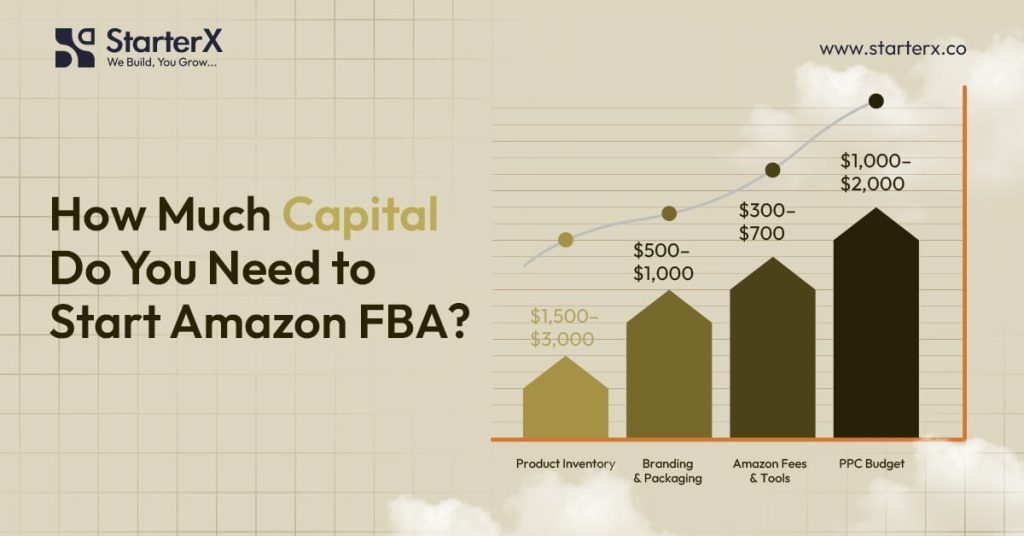
You need between $3,500 and $7,000 to start a private label Amazon FBA business in 2026, depending on your product category, order quantity, and marketing budget. Starting with less is possible, but it limits your ability to scale, test ads, or maintain a healthy inventory flow.
The largest expenses come from inventory, product development, Amazon fees, and advertising. To stay competitive in 2026, you also need a budget for tools, packaging, and possible third-party services like design or freight forwarding.
Breakdown of Typical Startup Costs in 2026:
| Cost Area | Estimated Range (USD) |
| Product Inventory | $1,500 – $3,000 |
| Branding & Packaging | $500 – $1,000 |
| Amazon Fees & Account | $100 – $300 (monthly tools, Pro plan) |
| Photography & Listing | $200 – $500 |
| Advertising (PPC) | $1,000 – $2,000 |
| Shipping & Freight | $300 – $700 |
| Total Estimated Cost | $3,500 – $7,000 |
Some sellers choose to start smaller, using retail arbitrage or wholesale models, which can require $500 to $1,500 upfront. However, these models often have lower profit margins and less long-term brand control.
Key Attributes That Affect Startup Budget:
- Product Size and Weight
Heavier or oversized items increase manufacturing, shipping, and FBA fees. - Minimum Order Quantity (MOQ)
Most suppliers require an MOQ between 200 to 500 units, which impacts your upfront inventory investment. - Ad Competitiveness
Launching in high-competition niches (like supplements or home improvement) often demands higher PPC budgets. - Sourcing Location
Importing from China, India, or Vietnam adds freight and customs costs, but can offer better unit economics.
Starting Amazon FBA in 2026 requires real investment. A private label launch needs around $3,500 to $7,000 to cover inventory, branding, PPC, and tools. Planning your budget up front is critical to avoid early cash flow problems.
How Competitive Is Amazon FBA in 2026?
Amazon FBA is highly competitive in 2026, especially in saturated categories like electronics, supplements, and beauty products. However, sellers who focus on underserved niches, unique product positioning, and data-driven decisions still find strong opportunities.
The number of active sellers continues to grow, but so do the tools, insights, and strategies available to stay competitive.
Key Statistics on FBA Competition in 2026:
- 9.8 million sellers are registered on Amazon worldwide
- 470,000 new sellers joined the platform in 2025
- Only 25% of sellers have more than 100 active SKUs
- Over 63% of sellers remain profitable despite increased competition
- Private label sellers still dominate mid to high-ticket niches
Most competition comes from low-differentiation products that rely on price wars. Successful sellers in 2026 stand out by improving branding, customer experience, and SEO-optimized listings.
Common Signs of High Competition:
- Dozens of similar products with the same design and features
- Over 1,000 reviews on page 1 for target keywords
- CPC above $1.50 in Sponsored Product ads
- Multiple listings from Amazon Retail or major brands
Where Sellers Still Find Low Competition:
- Micro-niches with specific buyer intent (e.g., eco-friendly toddler toys, ergonomic office storage)
- Emerging trends in categories like pet tech, AI productivity tools, or wellness gear
- Bundled or value-added offers that solve unique pain points
- Customized or differentiated packaging and branding that targets a specific persona
Tools to Analyze Competition:
- Helium 10 Black Box – for finding low-competition product ideas
- Jungle Scout Opportunity Finder – to assess keyword saturation
- Data Dive and SmartScout – for deep niche validation and listing gap analysis
Amazon FBA in 2026 is more competitive than ever, but not oversaturated across the board. Success depends on finding low-competition niches, offering real differentiation, and using the right tools to analyze product and keyword gaps.
How Much Do Amazon FBA Sellers Make in 2026?
Amazon FBA sellers in 2026 earn anywhere from a few hundred dollars to over $100,000 per month, depending on their business model, product selection, and marketing efficiency. The majority of sellers operate in the $1,000 to $10,000 monthly revenue range, with profit margins typically between 20% and 35%.
Success varies widely based on how well sellers manage costs, advertising (PPC), and inventory turnover. New sellers often take 6 to 12 months to become profitable, while experienced sellers can scale faster through optimized systems and data-backed decisions.
FBA Seller Income Breakdown in 2026:
| Monthly Revenue | % of Sellers | Average Profit Margin |
| Less than $1,000 | 24% | 10% – 20% |
| $1,000 – $10,000 | 49% | 20% – 30% |
| $10,000 – $50,000 | 18% | 25% – 35% |
| Over $50,000 | 9% | 30% – 40%+ |
63% of sellers report being profitable in 2026, and 27% earn more than $5,000 in monthly profit, according to Jungle Scout’s Seller Report. Profitability often improves after the first product launch, once sellers optimize listings, lower ACoS, and gain product reviews.
Key Factors That Affect Earnings:
- Business model: Private label sellers tend to earn more due to better brand control and higher margins. Wholesale sellers scale with volume, but often face tighter margins.
- Product selection: In-demand, low-return products in evergreen niches like Home & Kitchen, Pet Supplies, and Office Products consistently drive revenue.
- Ad efficiency: High-performing campaigns with ACoS under 30% lead to better profitability. Sellers using automation tools like Adtomic or Perpetua manage PPC spend more effectively.
- Operational systems: Top sellers use tools for inventory forecasting, keyword tracking, and listing optimization to increase efficiency and reduce costs.
In 2026, Amazon FBA sellers can still build profitable businesses with the right systems. Most sellers earn between $1,000 and $10,000 monthly, but those who manage ads, inventory, and product selection well can achieve $50,000+ per month with strong profit margins.
What Are the Best Product Categories for Amazon FBA in 2026?
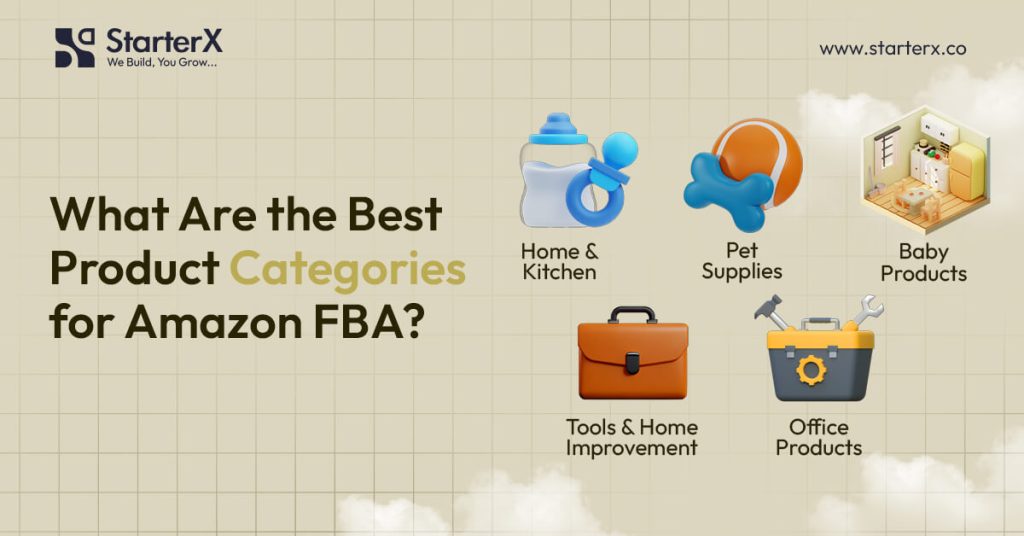
The best product categories for Amazon FBA in 2026 offer stable demand, low return rates, and moderate competition. These categories allow sellers to maintain healthy profit margins while reducing risk from refunds, storage fees, or ad overspending.
Product success is closely tied to niche selection. Sellers who focus on solving specific problems with unique product angles often outperform those chasing high-volume trends with generic listings.
Top Performing Categories in 2026:
| Category | Avg. Profit Margin | Key Attributes |
| Home & Kitchen | 25% – 35% | High daily use, easy bundling, low returns |
| Pet Supplies | 22% – 32% | Repeat buyers, loyal niches, emotional buy |
| Baby Products | 25% – 34% | Safety-focused, consistent demand |
| Office Products | 20% – 30% | Low seasonality, remote work demand |
| Tools & Home Improvement | 20% – 28% | Practical value, DIY trends |
Home & Kitchen remains a top category due to its wide range of sub-niches and bundling opportunities. Products like drawer organizers, storage bins, and silicone baking tools continue to perform well with low return rates and high keyword diversity.
Pet Supplies also shows consistent growth, especially in micro-niches like enrichment toys, grooming kits, and eco-friendly accessories. Emotional connection to pets drives repeat purchases and brand loyalty.
Baby Products and Office Supplies perform well in 2026 because they are considered essentials. Products in these spaces tend to have predictable demand and relatively low ad competition if you target long-tail keywords.
Categories to Be Cautious With:
- Electronics
High return rates, complex quality control, and strong brand competition. - Supplements and Health Products
Regulatory compliance, restricted claims, and saturated listings. - Fashion and Apparel
High variability in size, taste, and style preferences; frequent returns. - Phone Accessories
Overcrowded market with low differentiation and constant model updates.
What Makes a Category “Best” for FBA in 2026?
- Low return rate (<8%)
- Evergreen demand not tied to trends or seasons
- High keyword opportunity with moderate competition
- Simple to manufacture, store, and ship
- Room for bundling or brand differentiation
The best Amazon FBA categories in 2026 combine strong demand, low complexity, and space for brand building. Sellers should focus on functional products in high-trust categories like Home, Pets, and Baby to maximize margin and reduce risk.
What Tools Do Most Amazon Sellers Use in 2026?
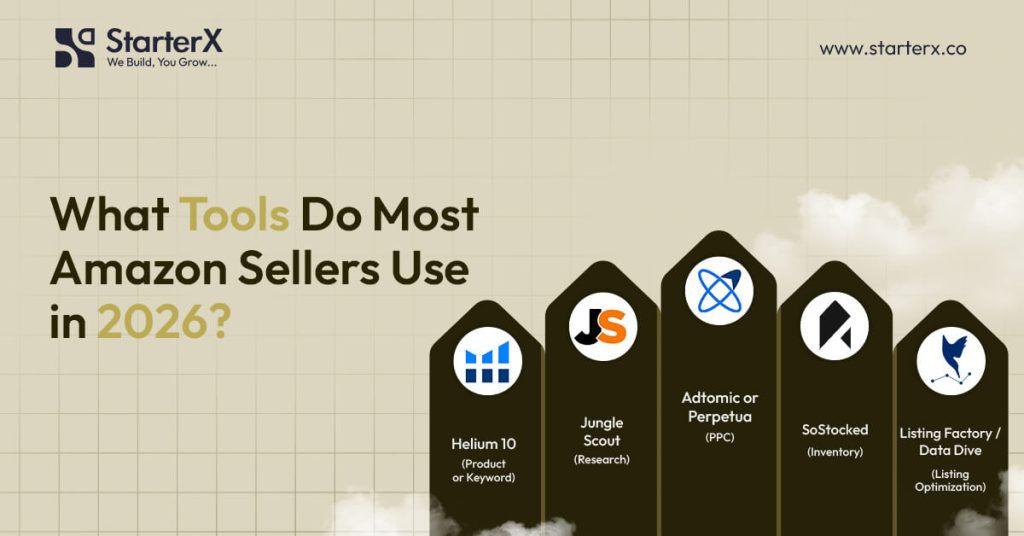
In 2026, most successful Amazon FBA sellers rely on a mix of research, optimization, and automation tools to manage product selection, keyword targeting, inventory, and advertising. These tools help sellers save time, reduce costs, and improve decision-making based on real data.
Using the right software stack has become essential to stay competitive. Manual processes are no longer enough in a marketplace where advertising costs and listing saturation keep rising.
Most Commonly Used Amazon Seller Tools in 2026:
| Tool Category | Popular Tools | Purpose |
| Product Research | Helium 10 Black Box, Jungle Scout | Find high-demand, low-competition product ideas |
| Keyword Research | Data Dive, Cerebro, ZonGuru | Discover relevant search terms and search volume |
| PPC & Ad Management | Adtomic, Perpetua, Intentwise | Automate ads, control ACoS, scale PPC campaigns |
| Listing Optimization | Listing Factory, Scale Insights | Improve titles, bullets, and backend keywords |
| Inventory Management | SoStocked, RestockPro | Forecast inventory, manage stock levels |
| Review & Feedback | FeedbackWhiz, Sellerboard | Monitor reviews, request feedback |
Key Attributes Sellers Look For in Tools:
- Data accuracy
Tools must pull real-time Amazon marketplace data to guide decisions. - Automation
Sellers use tools that automate tasks like PPC bidding, inventory forecasting, or review requests. - Integration
Software that connects with Seller Central, Google Sheets, and other platforms is preferred for a smoother workflow. - Ease of use
Tools with clean interfaces and guided workflows help sellers take quicker action.
Example Tool Stack for a 2026 Private Label Seller:
- Helium 10 for research and tracking
- Data Dive for keyword clustering and listing gaps
- Perpetua to automate and optimize Sponsored Products ads
- SoStocked for real-time inventory and restocking alerts
- Listing Factory to boost conversion with optimized copy
Top Amazon sellers in 2026 depend on a reliable tool stack to grow and protect their business. Tools for product research, PPC, and inventory forecasting are now essential—not optional—for staying profitable and competitive in the FBA ecosystem.
Final Verdict: Is Amazon FBA Worth Starting in 2026?
Yes, Amazon FBA is worth starting in 2026 if you approach it as a real business with the right capital, product strategy, and long-term mindset. While the platform is more competitive than before, sellers who prepare properly still find strong success.
Amazon’s fulfillment system, customer trust, and Prime shipping benefits continue to offer massive value, but only to sellers who can manage costs, protect margins, and invest in marketing.
FBA Is Worth It If You:
- Have a startup budget between $3,500 and $7,000
- Understand product research and niche selection
- Plan for advertising costs and margin control
- Use the right tools to track performance and automate key tasks
- Build a brand, not just sell a product
FBA May Not Be Right If You:
- Want fast profits with low risk
- Have very limited capital or cash flow
- Rely on trend chasing or low-differentiation products
- Avoid using data or tools for decision-making
Amazon FBA is no longer a side hustle you can launch casually. It’s a full business that rewards informed, consistent operators who stay on top of trends, customer needs, and platform changes.
If you’re serious about launching your Amazon FBA business in 2026 and want expert guidance from day one, StarterX is a full-service Amazon agency that helps you with everything, from product research to launch and growth.
Book a free consultation call with our Amazon growth experts today and start your journey with confidence.
Frequently Asked Questions About Amazon FBA in 2026
Is Amazon FBA still profitable in 2026?
Yes, Amazon FBA is still profitable in 2026 for sellers who manage costs and sell in the right product categories. Over 63% of sellers report being profitable, with private label sellers seeing margins between 22% and 32%.
How much money do I need to start Amazon FBA in 2026?
Most sellers need between $3,500 and $7,000 to start a private label FBA business. This covers inventory, branding, Amazon fees, PPC, and tools. Starting with less is possible in models like arbitrage or wholesale, but growth is slower.
What are the biggest risks of Amazon FBA?
The biggest risks are high ad costs, account suspensions, and inventory mismanagement. Other risks include listing hijackers, product compliance issues, and poor supplier reliability. Success depends on managing these proactively.
Which product categories are most profitable in 2026?
Home & Kitchen, Pet Supplies, Baby Products, and Office Supplies are among the most profitable in 2026. These categories offer evergreen demand, low return rates, and opportunities for branding or bundling.
Can beginners still succeed with Amazon FBA?
Yes, beginners can still succeed, but the learning curve is higher than in past years. With the right training, capital, and product strategy, many first-time sellers launch successfully in under 12 months.
How long does it take to become profitable with FBA?
Most sellers become profitable within 6 to 12 months. Profit timelines vary depending on product choice, ad spend, and startup capital. Reinvesting early profits helps speed up growth.
Is FBA better than FBM in 2026?
FBA is better for sellers who want scale, automation, and Prime eligibility. FBM is a better fit for custom, oversized, or low-turnover products. Many successful sellers use both models depending on product type.
Do I need a company or LLC to start Amazon FBA?
No, you can start as an individual seller, but having an LLC is recommended for tax benefits and liability protection. Most full-time sellers register a business once they begin scaling.
What tools do FBA sellers use in 2026?
Popular tools include Helium 10, Jungle Scout, Adtomic, Perpetua, and SoStocked. These help with product research, keyword tracking, ad automation, and inventory management.
Can I hire an agency to launch my Amazon FBA business?
Yes, you can hire a full-service Amazon agency like StarterX to handle product research, branding, listings, PPC, and logistics. This reduces risk and helps you launch faster with expert support.
The StarterX Team is a group of e-commerce experts with years of hands-on experience in launching, managing, and scaling online businesses. As trusted authorities in the e-commerce space, we’ve helped entrepreneurs grow successful stores on Amazon, Shopify, TikTok, and Walmart. Backed by real-world results and a data-driven approach, we deliver proven strategies and insights you can trust to succeed in the digital marketplace.

